Batch-Incremental Triplet Sampling for Training Triplet Networks Using Bayesian Updating Theorem
Milad Sikaroudi,
Benyamin Ghojogh,
Fakhri Karray,
Mark Crowley,
Hamid Reza Tizhoosh

Auto-TLDR; Bayesian Updating Triplet Mining with Bayesian updating
Similar papers
Nonlinear Ranking Loss on Riemannian Potato Embedding
Byung Hyung Kim, Yoonje Suh, Honggu Lee, Sungho Jo

Auto-TLDR; Riemannian Potato for Rank-based Metric Learning
Abstract Slides Poster Similar
Learning Embeddings for Image Clustering: An Empirical Study of Triplet Loss Approaches
Kalun Ho, Janis Keuper, Franz-Josef Pfreundt, Margret Keuper

Auto-TLDR; Clustering Objectives for K-means and Correlation Clustering Using Triplet Loss
Abstract Slides Poster Similar
Progressive Learning Algorithm for Efficient Person Re-Identification
Zhen Li, Hanyang Shao, Liang Niu, Nian Xue

Auto-TLDR; Progressive Learning Algorithm for Large-Scale Person Re-Identification
Abstract Slides Poster Similar
Generalized Local Attention Pooling for Deep Metric Learning
Carlos Roig Mari, David Varas, Issey Masuda, Juan Carlos Riveiro, Elisenda Bou-Balust

Auto-TLDR; Generalized Local Attention Pooling for Deep Metric Learning
Abstract Slides Poster Similar
Supervised Domain Adaptation Using Graph Embedding
Lukas Hedegaard, Omar Ali Sheikh-Omar, Alexandros Iosifidis

Auto-TLDR; Domain Adaptation from the Perspective of Multi-view Graph Embedding and Dimensionality Reduction
Abstract Slides Poster Similar
Improved Deep Classwise Hashing with Centers Similarity Learning for Image Retrieval
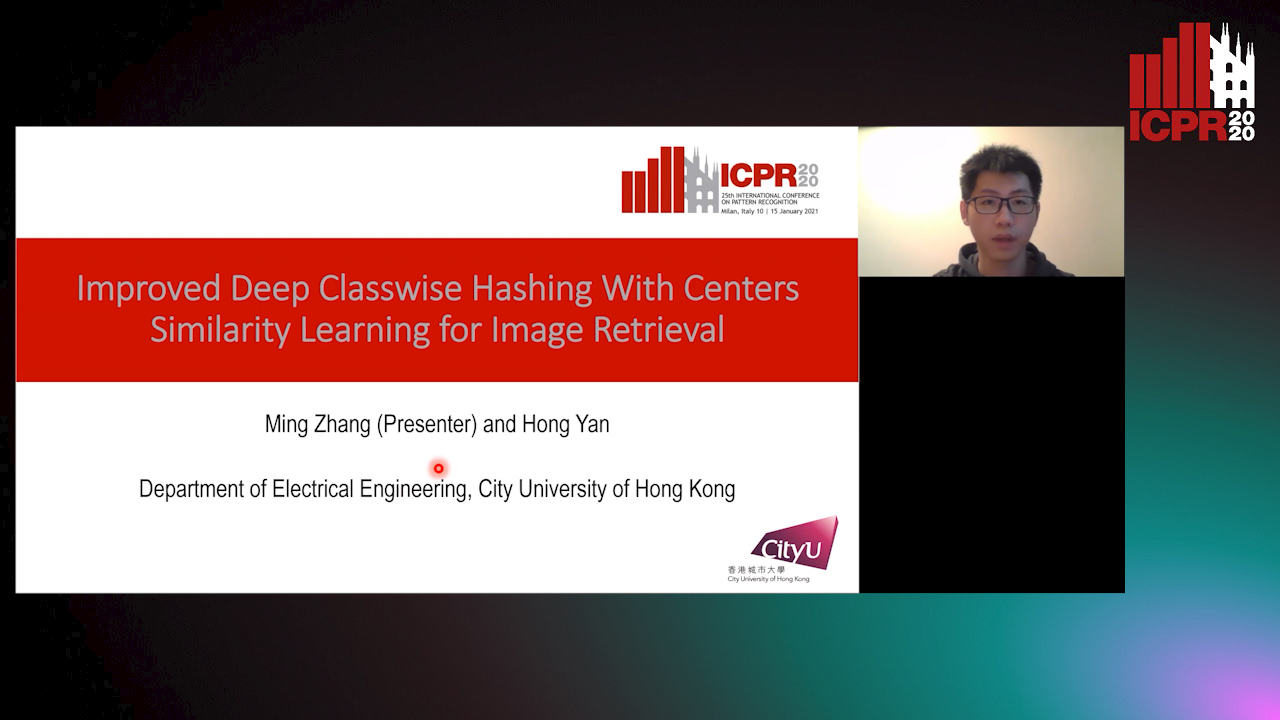
Auto-TLDR; Deep Classwise Hashing for Image Retrieval Using Center Similarity Learning
Abstract Slides Poster Similar
SL-DML: Signal Level Deep Metric Learning for Multimodal One-Shot Action Recognition
Raphael Memmesheimer, Nick Theisen, Dietrich Paulus
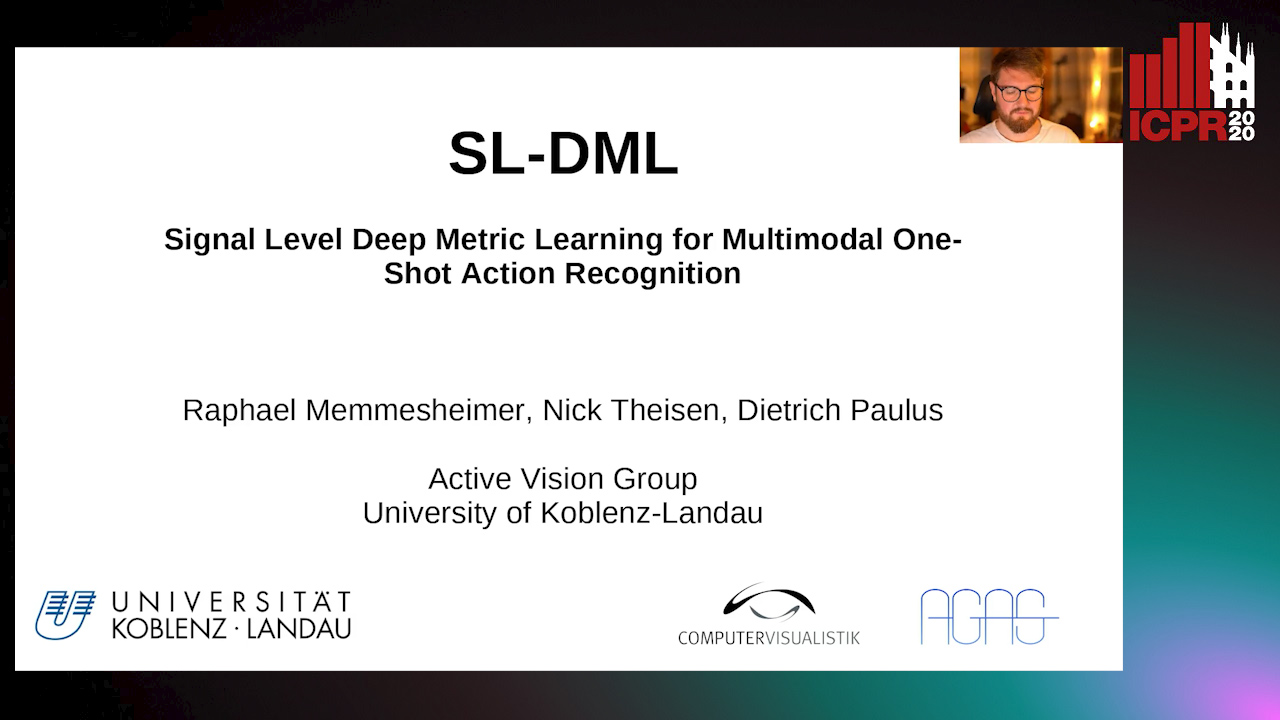
Auto-TLDR; One-Shot Action Recognition using Metric Learning
Q-SNE: Visualizing Data Using Q-Gaussian Distributed Stochastic Neighbor Embedding
Motoshi Abe, Junichi Miyao, Takio Kurita

Auto-TLDR; Q-Gaussian distributed stochastic neighbor embedding for 2-dimensional mapping and classification
Abstract Slides Poster Similar
Supporting Skin Lesion Diagnosis with Content-Based Image Retrieval
Stefano Allegretti, Federico Bolelli, Federico Pollastri, Sabrina Longhitano, Giovanni Pellacani, Costantino Grana
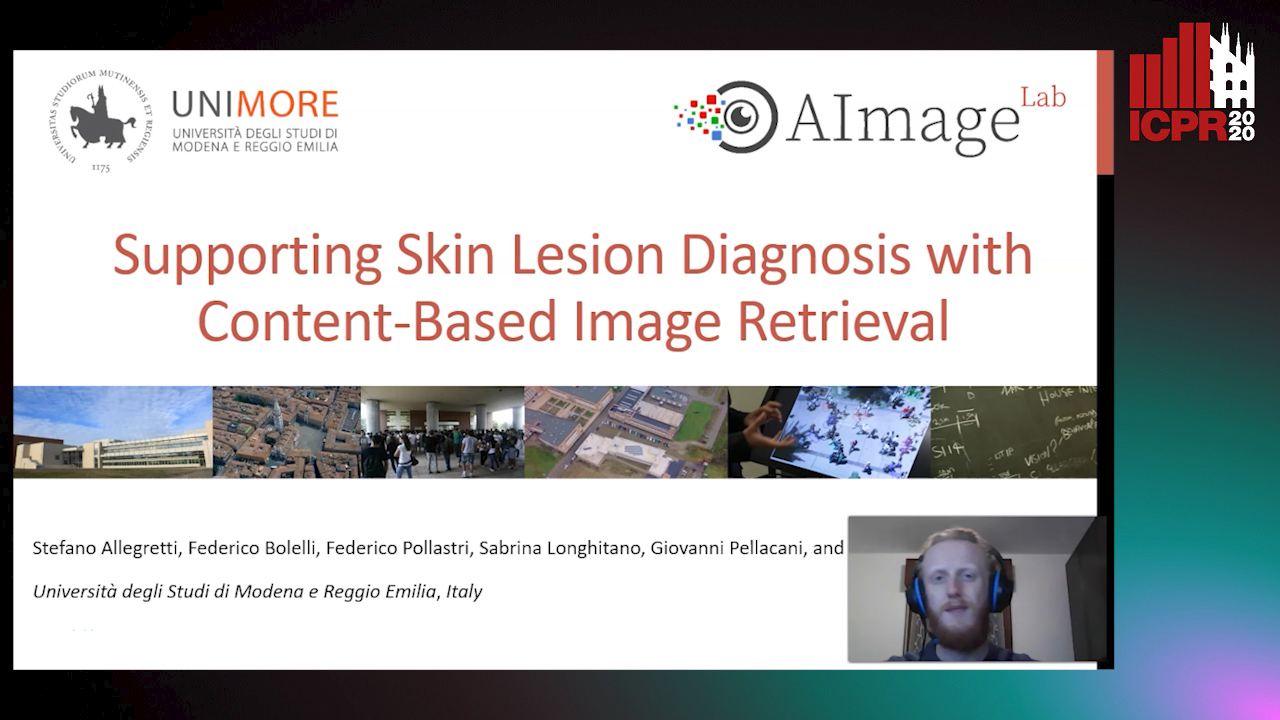
Auto-TLDR; Skin Images Retrieval Using Convolutional Neural Networks for Skin Lesion Classification and Segmentation
Abstract Slides Poster Similar
Bayesian Active Learning for Maximal Information Gain on Model Parameters
Kasra Arnavaz, Aasa Feragen, Oswin Krause, Marco Loog

Auto-TLDR; Bayesian assumptions for Bayesian classification
Abstract Slides Poster Similar
Loop-closure detection by LiDAR scan re-identification
Jukka Peltomäki, Xingyang Ni, Jussi Puura, Joni-Kristian Kamarainen, Heikki Juhani Huttunen
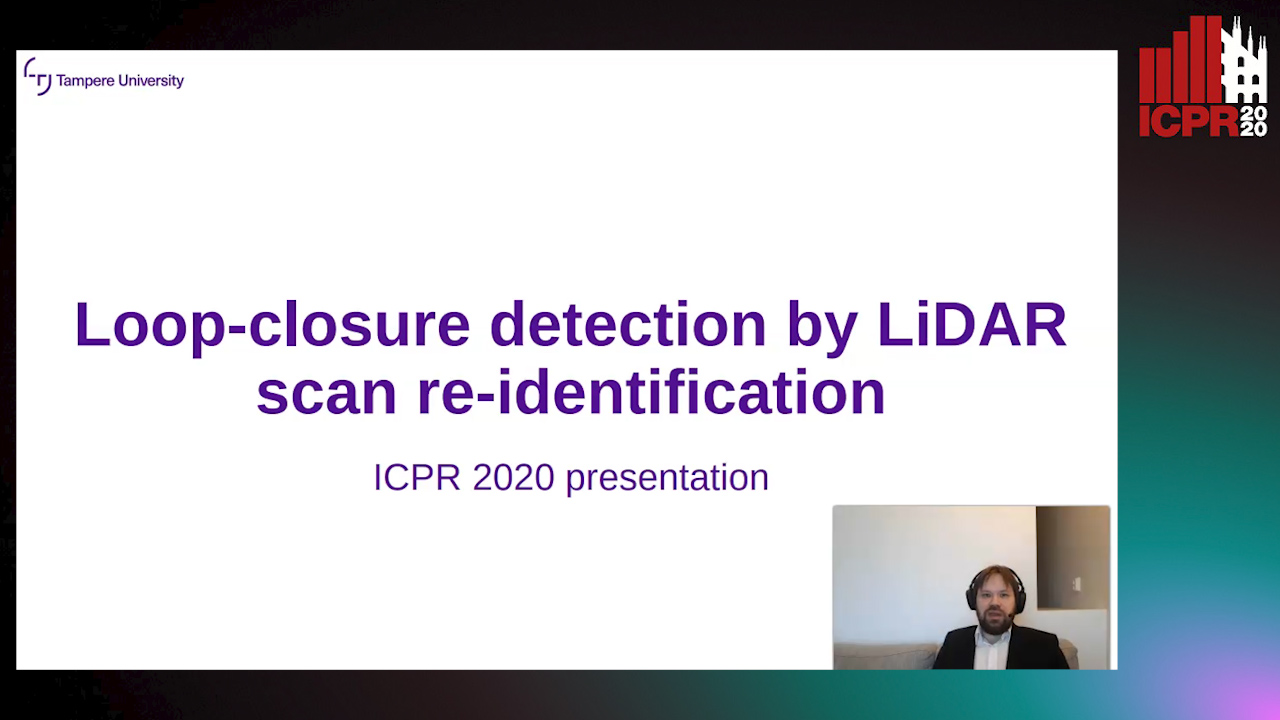
Auto-TLDR; Loop-Closing Detection from LiDAR Scans Using Convolutional Neural Networks
Abstract Slides Poster Similar
Soft Label and Discriminant Embedding Estimation for Semi-Supervised Classification
Fadi Dornaika, Abdullah Baradaaji, Youssof El Traboulsi
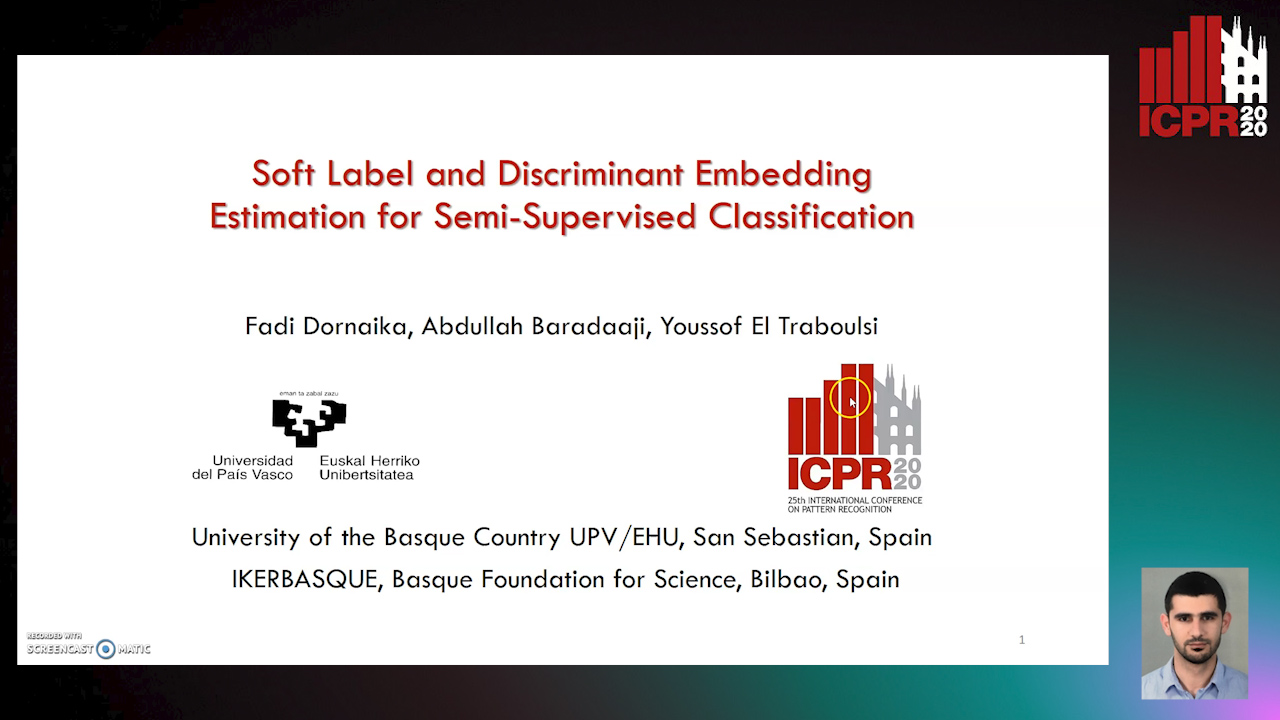
Auto-TLDR; Semi-supervised Semi-Supervised Learning for Linear Feature Extraction and Label Propagation
Abstract Slides Poster Similar
Deep Top-Rank Counter Metric for Person Re-Identification
Chen Chen, Hao Dou, Xiyuan Hu, Silong Peng

Auto-TLDR; Deep Top-Rank Counter Metric for Person Re-identification
Abstract Slides Poster Similar
A Self-Supervised GAN for Unsupervised Few-Shot Object Recognition
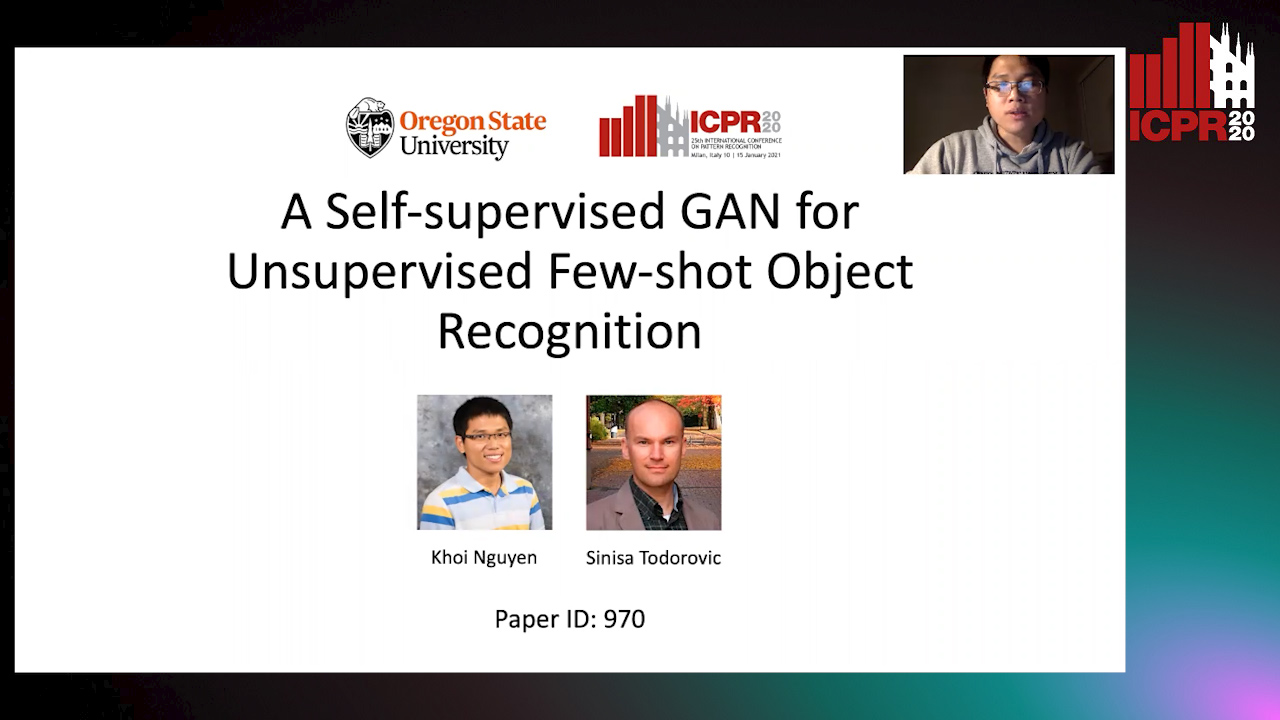
Auto-TLDR; Self-supervised Few-Shot Object Recognition with a Triplet GAN
Abstract Slides Poster Similar
Total Whitening for Online Signature Verification Based on Deep Representation
Xiaomeng Wu, Akisato Kimura, Kunio Kashino, Seiichi Uchida

Auto-TLDR; Total Whitening for Online Signature Verification
Abstract Slides Poster Similar
Interpolation in Auto Encoders with Bridge Processes
Carl Ringqvist, Henrik Hult, Judith Butepage, Hedvig Kjellstrom
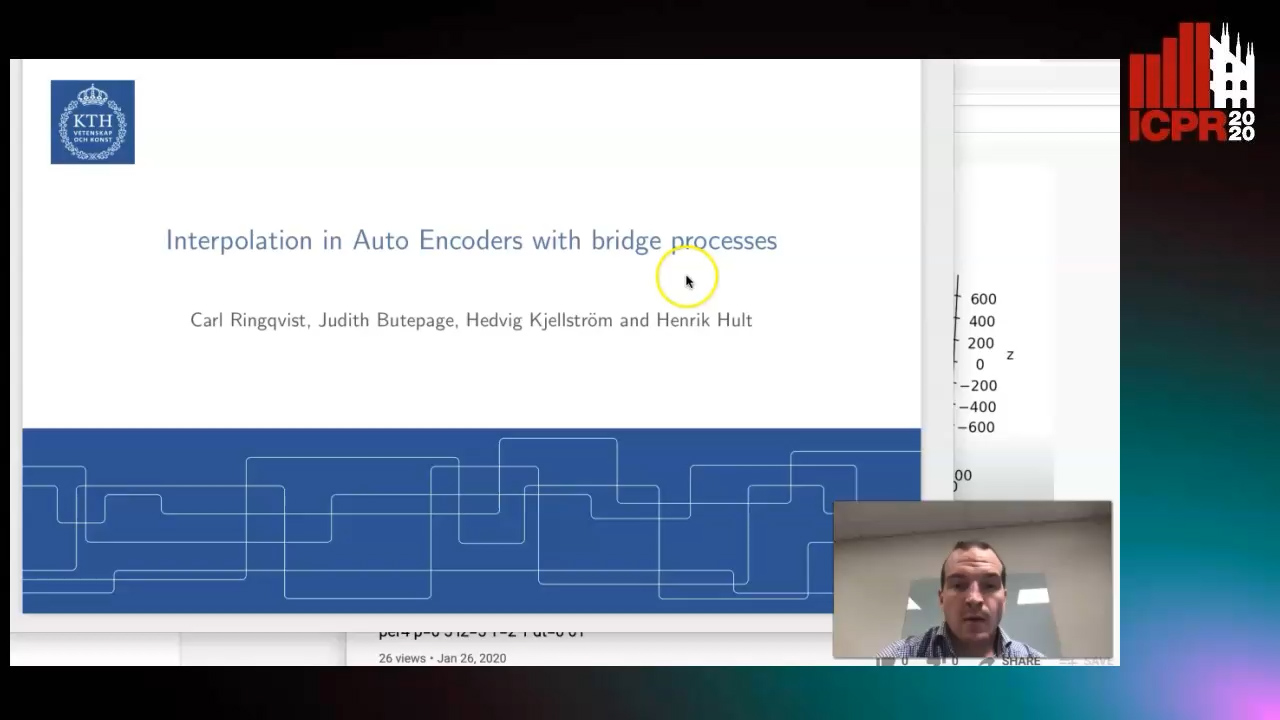
Auto-TLDR; Stochastic interpolations from auto encoders trained on flattened sequences
Abstract Slides Poster Similar
SSDL: Self-Supervised Domain Learning for Improved Face Recognition
Samadhi Poornima Kumarasinghe Wickrama Arachchilage, Ebroul Izquierdo

Auto-TLDR; Self-supervised Domain Learning for Face Recognition in unconstrained environments
Abstract Slides Poster Similar
Modeling the Distribution of Normal Data in Pre-Trained Deep Features for Anomaly Detection
Oliver Rippel, Patrick Mertens, Dorit Merhof
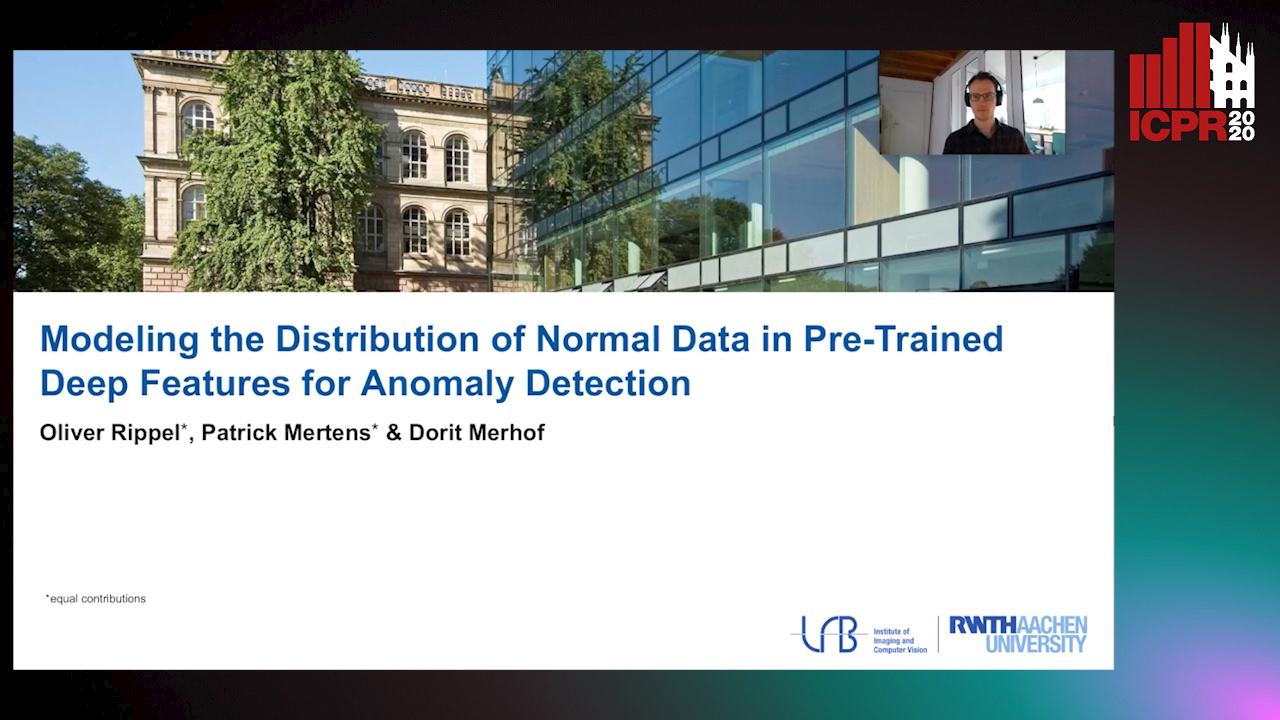
Auto-TLDR; Deep Feature Representations for Anomaly Detection in Images
Abstract Slides Poster Similar
Temporally Coherent Embeddings for Self-Supervised Video Representation Learning
Joshua Knights, Ben Harwood, Daniel Ward, Anthony Vanderkop, Olivia Mackenzie-Ross, Peyman Moghadam

Auto-TLDR; Temporally Coherent Embeddings for Self-supervised Video Representation Learning
Abstract Slides Poster Similar
Efficient Online Subclass Knowledge Distillation for Image Classification
Maria Tzelepi, Nikolaos Passalis, Anastasios Tefas
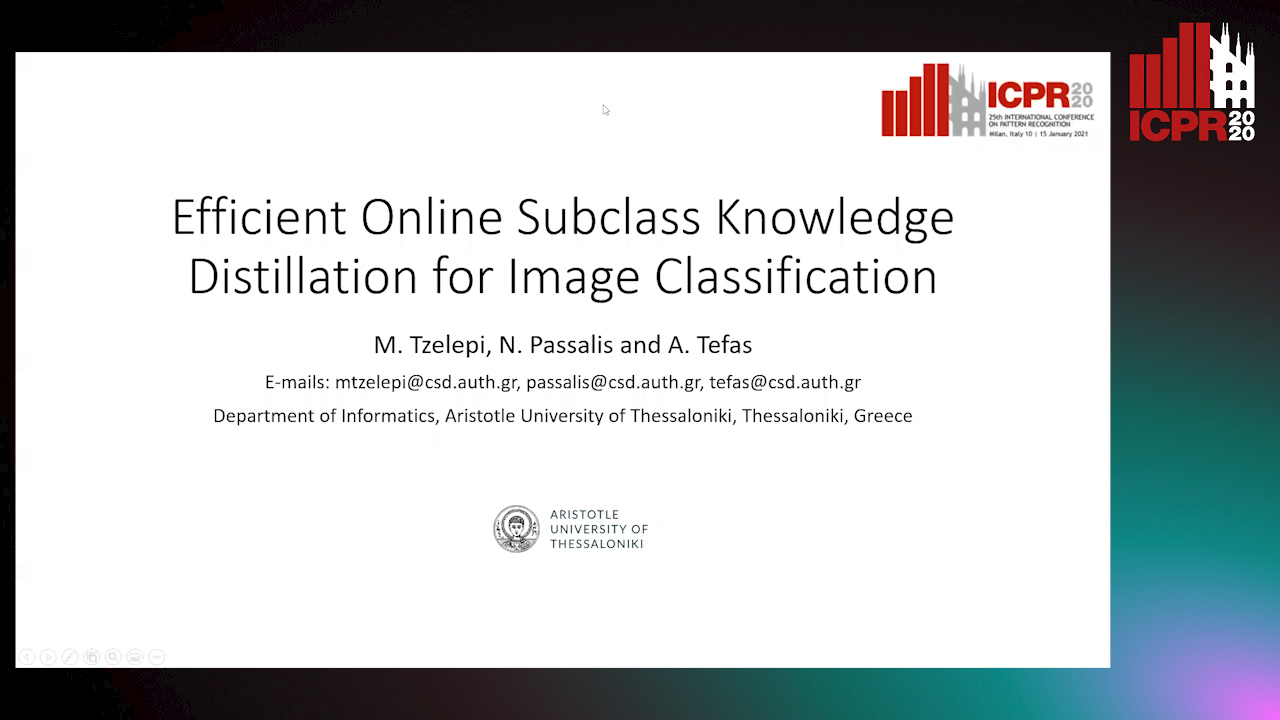
Auto-TLDR; OSKD: Online Subclass Knowledge Distillation
Abstract Slides Poster Similar
Learning Metric Features for Writer-Independent Signature Verification Using Dual Triplet Loss
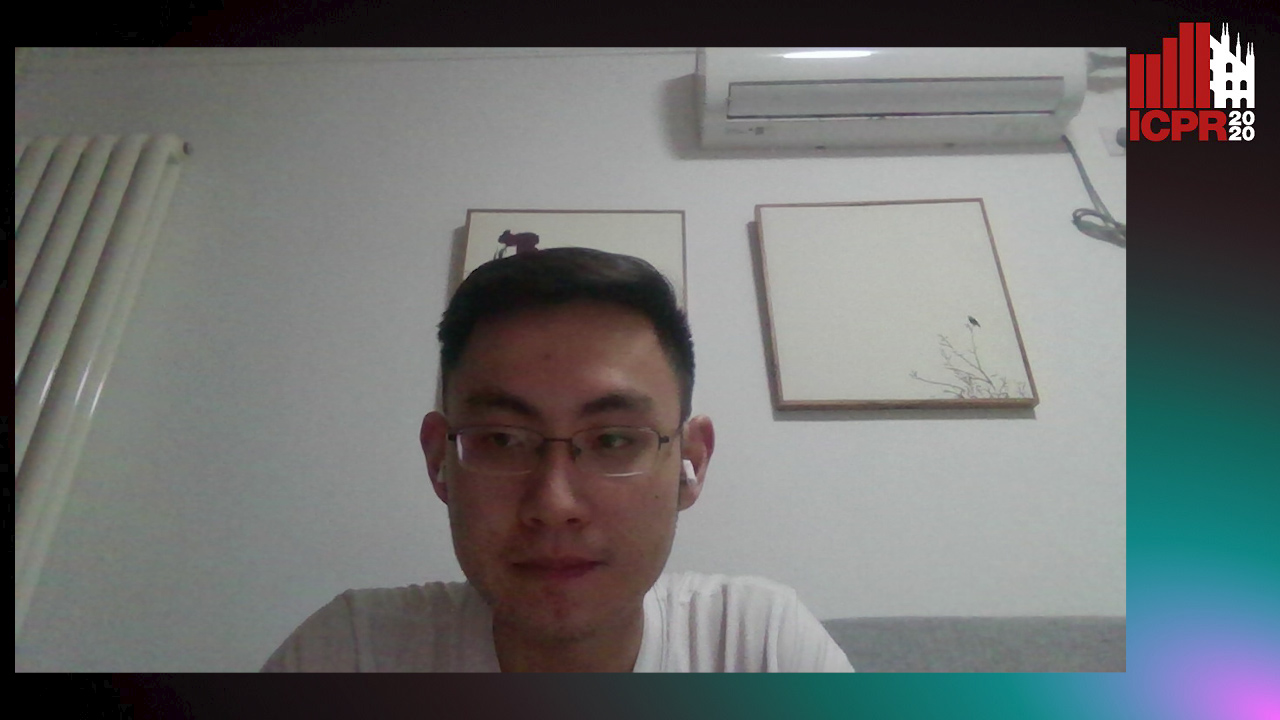
Auto-TLDR; A dual triplet loss based method for offline writer-independent signature verification
Multi-Level Deep Learning Vehicle Re-Identification Using Ranked-Based Loss Functions
Eleni Kamenou, Jesus Martinez-Del-Rincon, Paul Miller, Patricia Devlin - Hill
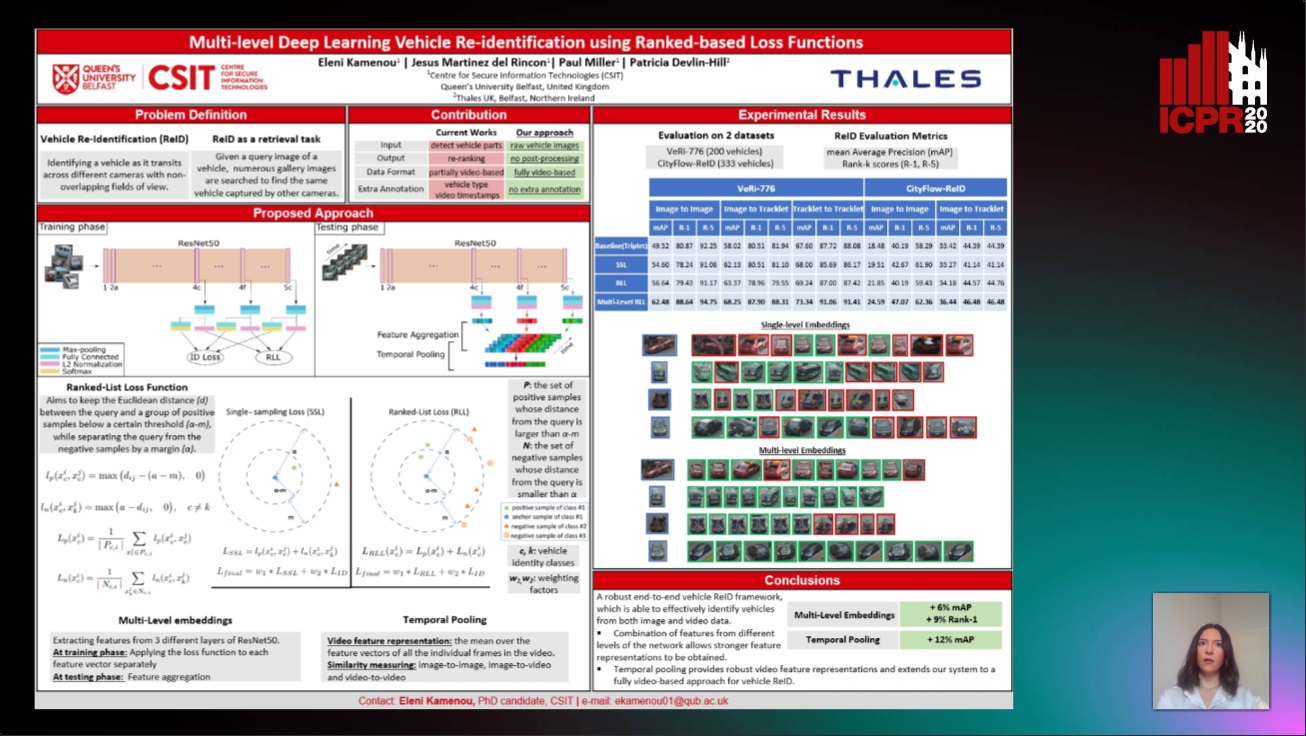
Auto-TLDR; Multi-Level Re-identification Network for Vehicle Re-Identification
Abstract Slides Poster Similar
A Unified Framework for Distance-Aware Domain Adaptation
Fei Wang, Youdong Ding, Huan Liang, Yuzhen Gao, Wenqi Che
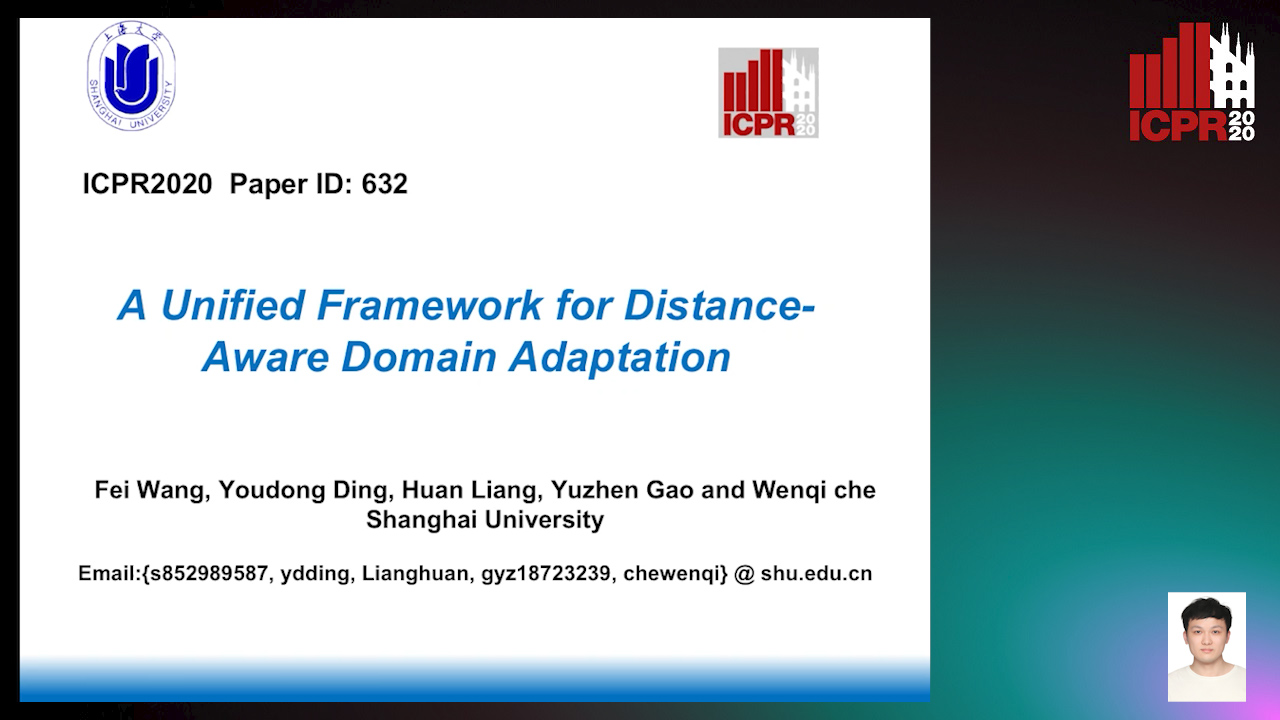
Auto-TLDR; distance-aware domain adaptation
Abstract Slides Poster Similar
Multi-Modal Deep Clustering: Unsupervised Partitioning of Images

Auto-TLDR; Multi-Modal Deep Clustering for Unlabeled Images
Abstract Slides Poster Similar
Rotation Invariant Aerial Image Retrieval with Group Convolutional Metric Learning
Hyunseung Chung, Woo-Jeoung Nam, Seong-Whan Lee

Auto-TLDR; Robust Remote Sensing Image Retrieval Using Group Convolution with Attention Mechanism and Metric Learning
Abstract Slides Poster Similar
Few-Shot Font Generation with Deep Metric Learning
Haruka Aoki, Koki Tsubota, Hikaru Ikuta, Kiyoharu Aizawa
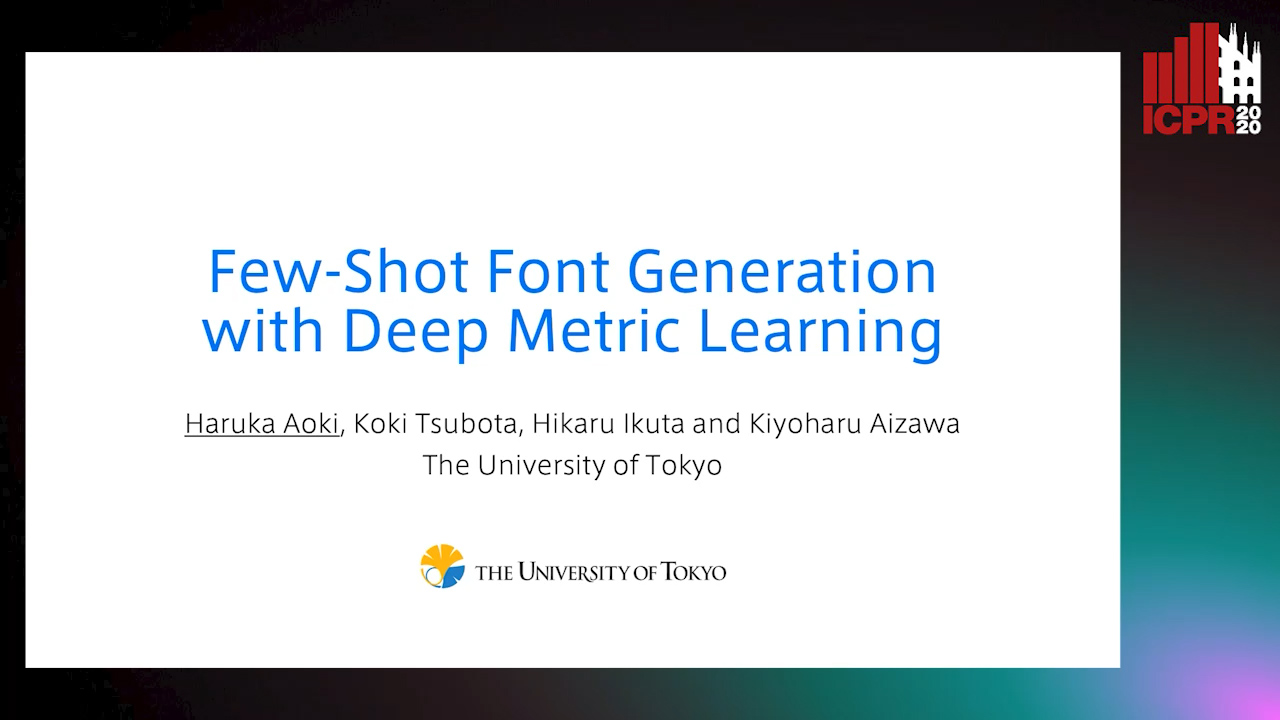
Auto-TLDR; Deep Metric Learning for Japanese Typographic Font Synthesis
Abstract Slides Poster Similar
Multi-Label Contrastive Focal Loss for Pedestrian Attribute Recognition
Xiaoqiang Zheng, Zhenxia Yu, Lin Chen, Fan Zhu, Shilong Wang

Auto-TLDR; Multi-label Contrastive Focal Loss for Pedestrian Attribute Recognition
Abstract Slides Poster Similar
Feature Extraction by Joint Robust Discriminant Analysis and Inter-Class Sparsity
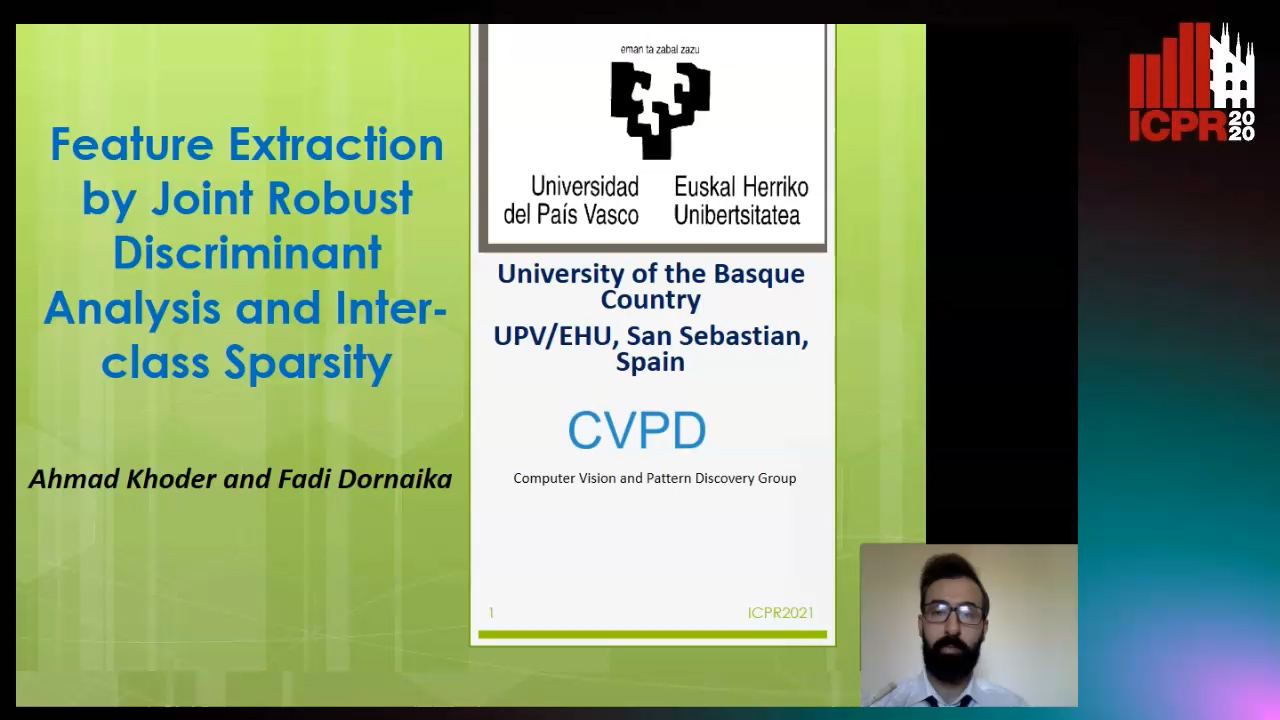
Auto-TLDR; Robust Discriminant Analysis with Feature Selection and Inter-class Sparsity (RDA_FSIS)
Rethinking ReID:Multi-Feature Fusion Person Re-Identification Based on Orientation Constraints
Mingjing Ai, Guozhi Shan, Bo Liu, Tianyang Liu

Auto-TLDR; Person Re-identification with Orientation Constrained Network
Abstract Slides Poster Similar
Not 3D Re-ID: Simple Single Stream 2D Convolution for Robust Video Re-Identification

Auto-TLDR; ResNet50-IBN for Video-based Person Re-Identification using Single Stream 2D Convolution Network
Abstract Slides Poster Similar
Sample-Dependent Distance for 1 : N Identification Via Discriminative Feature Selection
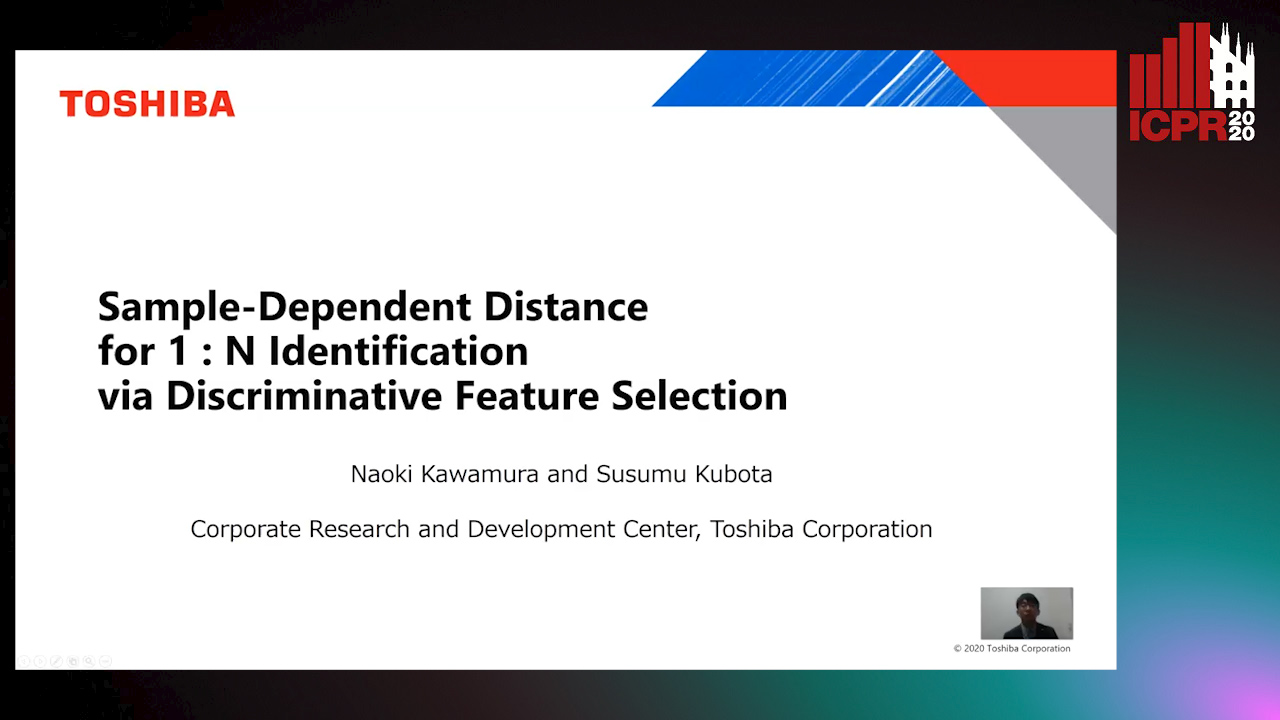
Auto-TLDR; Feature Selection Mask for 1:N Identification Problems with Binary Features
Abstract Slides Poster Similar
3D Facial Matching by Spiral Convolutional Metric Learning and a Biometric Fusion-Net of Demographic Properties
Soha Sadat Mahdi, Nele Nauwelaers, Philip Joris, Giorgos Bouritsas, Imperial London, Sergiy Bokhnyak, Susan Walsh, Mark Shriver, Michael Bronstein, Peter Claes

Auto-TLDR; Multi-biometric Fusion for Biometric Verification using 3D Facial Mesures
DAIL: Dataset-Aware and Invariant Learning for Face Recognition
Gaoang Wang, Chen Lin, Tianqiang Liu, Mingwei He, Jiebo Luo

Auto-TLDR; DAIL: Dataset-Aware and Invariant Learning for Face Recognition
Abstract Slides Poster Similar
One-Shot Representational Learning for Joint Biometric and Device Authentication
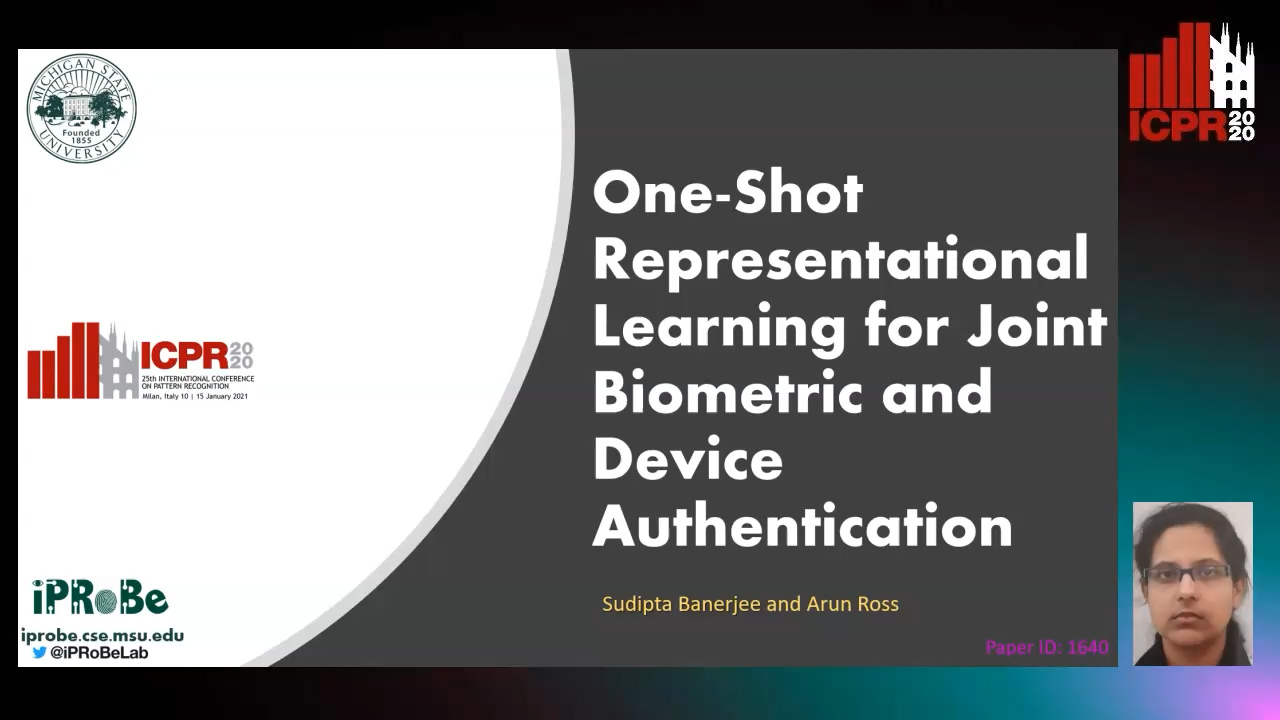
Auto-TLDR; Joint Biometric and Device Recognition from a Single Biometric Image
Abstract Slides Poster Similar
Cam-Softmax for Discriminative Deep Feature Learning
Tamas Suveges, Stephen James Mckenna

Auto-TLDR; Cam-Softmax: A Generalisation of Activations and Softmax for Deep Feature Spaces
Abstract Slides Poster Similar
Class-Incremental Learning with Pre-Allocated Fixed Classifiers
Federico Pernici, Matteo Bruni, Claudio Baecchi, Francesco Turchini, Alberto Del Bimbo

Auto-TLDR; Class-Incremental Learning with Pre-allocated Output Nodes for Fixed Classifier
Abstract Slides Poster Similar
A Joint Representation Learning and Feature Modeling Approach for One-Class Recognition
Pramuditha Perera, Vishal Patel

Auto-TLDR; Combining Generative Features and One-Class Classification for Effective One-class Recognition
Abstract Slides Poster Similar
N2D: (Not Too) Deep Clustering Via Clustering the Local Manifold of an Autoencoded Embedding
Ryan Mcconville, Raul Santos-Rodriguez, Robert Piechocki, Ian Craddock

Auto-TLDR; Local Manifold Learning for Deep Clustering on Autoencoded Embeddings
On Identification and Retrieval of Near-Duplicate Biological Images: A New Dataset and Protocol
Thomas E. Koker, Sai Spandana Chintapalli, San Wang, Blake A. Talbot, Daniel Wainstock, Marcelo Cicconet, Mary C. Walsh

Auto-TLDR; BINDER: Bio-Image Near-Duplicate Examples Repository for Image Identification and Retrieval
Constrained Spectral Clustering Network with Self-Training
Xinyue Liu, Shichong Yang, Linlin Zong
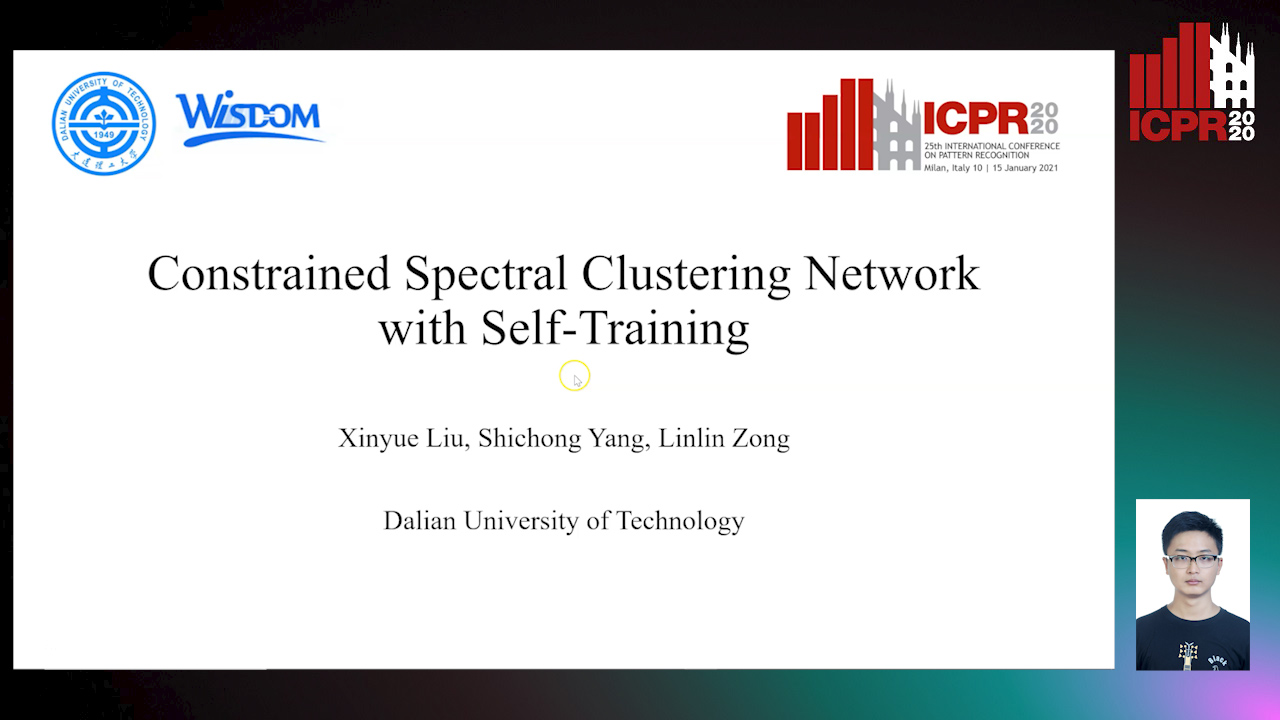
Auto-TLDR; Constrained Spectral Clustering Network: A Constrained Deep spectral clustering network
Abstract Slides Poster Similar
Teacher-Student Training and Triplet Loss for Facial Expression Recognition under Occlusion
Mariana-Iuliana Georgescu, Radu Ionescu
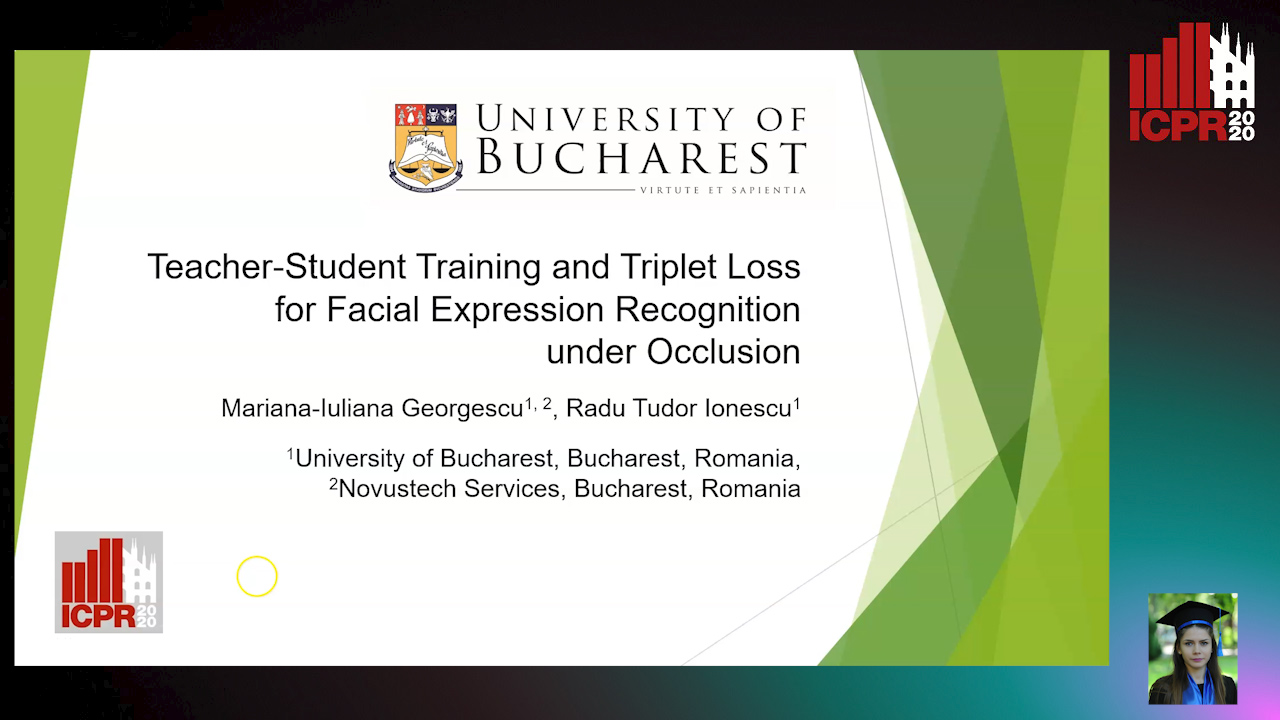
Auto-TLDR; Knowledge Distillation for Facial Expression Recognition under Occlusion
Equation Attention Relationship Network (EARN) : A Geometric Deep Metric Framework for Learning Similar Math Expression Embedding
Saleem Ahmed, Kenny Davila, Srirangaraj Setlur, Venu Govindaraju

Auto-TLDR; Representational Learning for Similarity Based Retrieval of Mathematical Expressions
Abstract Slides Poster Similar
Verifying the Causes of Adversarial Examples
Honglin Li, Yifei Fan, Frieder Ganz, Tony Yezzi, Payam Barnaghi

Auto-TLDR; Exploring the Causes of Adversarial Examples in Neural Networks
Abstract Slides Poster Similar
Angular Sparsemax for Face Recognition

Auto-TLDR; Angular Sparsemax for Face Recognition
Abstract Slides Poster Similar
Meta Soft Label Generation for Noisy Labels

Auto-TLDR; MSLG: Meta-Learning for Noisy Label Generation
Abstract Slides Poster Similar
Pose Variation Adaptation for Person Re-Identification
Lei Zhang, Na Jiang, Qishuai Diao, Yue Xu, Zhong Zhou, Wei Wu

Auto-TLDR; Pose Transfer Generative Adversarial Network for Person Re-identification
Abstract Slides Poster Similar
Semantics-Guided Representation Learning with Applications to Visual Synthesis
Jia-Wei Yan, Ci-Siang Lin, Fu-En Yang, Yu-Jhe Li, Yu-Chiang Frank Wang
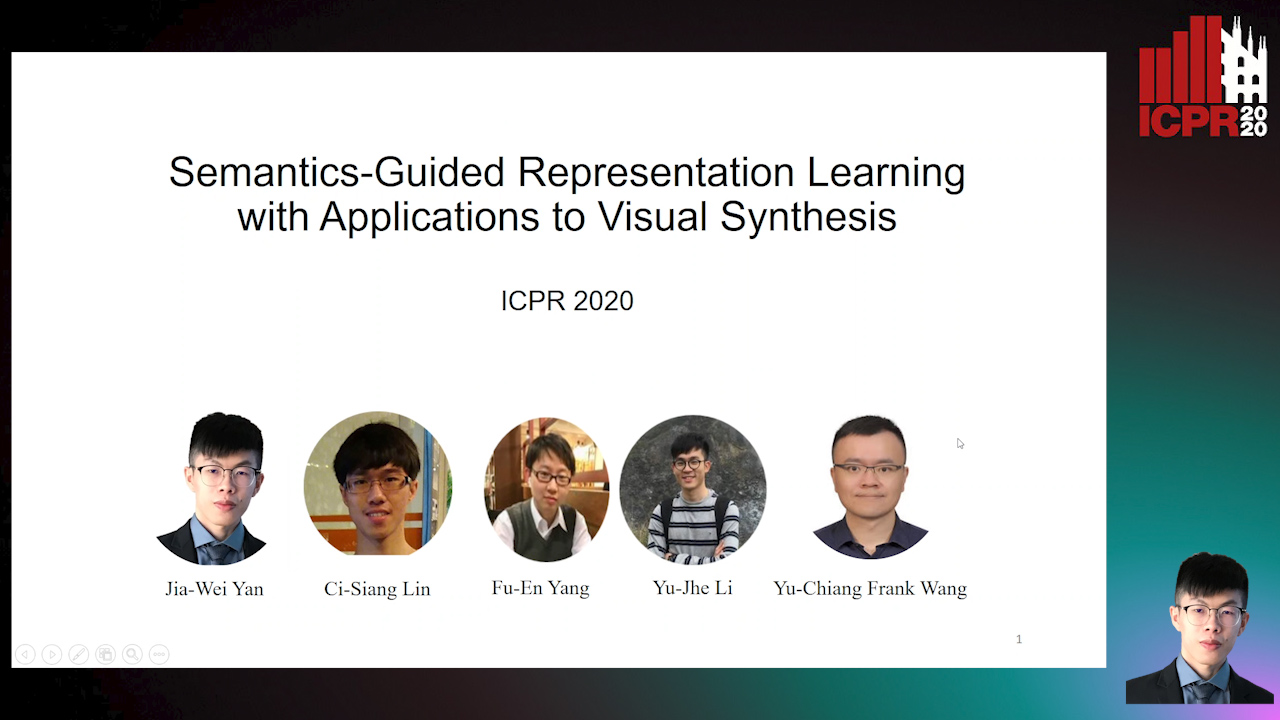
Auto-TLDR; Learning Interpretable and Interpolatable Latent Representations for Visual Synthesis
Abstract Slides Poster Similar
Aggregating Dependent Gaussian Experts in Local Approximation

Auto-TLDR; A novel approach for aggregating the Gaussian experts by detecting strong violations of conditional independence
Abstract Slides Poster Similar